Beef dolsot bibimbap is a Korean rice dish made with a variety of vegetables, beef, gochujang, and egg on top of white rice traditionally served in a dolsot or hot stone bowl. It’s a balanced filling meal that’s both delicious and nourishing!
“Bibim” and “bap” are two Korean terms that translate as “mixed” and “rice” in English. It literally means “mixed rice,” and that’s just the way to enjoy it—by mixing everything together first. The individual flavors of the vegetables, seasonings, and rice complement each other deliciously, and with the addition of the beef, it’s irresistibly good. What makes it even better is the crispy rice that forms at the bottom of the dolsot! It adds a delightful contrast of texture between the fluffy rice, vegetables, and egg.
I like my bibimbap with seasoned raw meat, called yukhoe, so that’s what I used. But of course, if you prefer, you can give the meat a quick stir fry before adding it to your bowl.
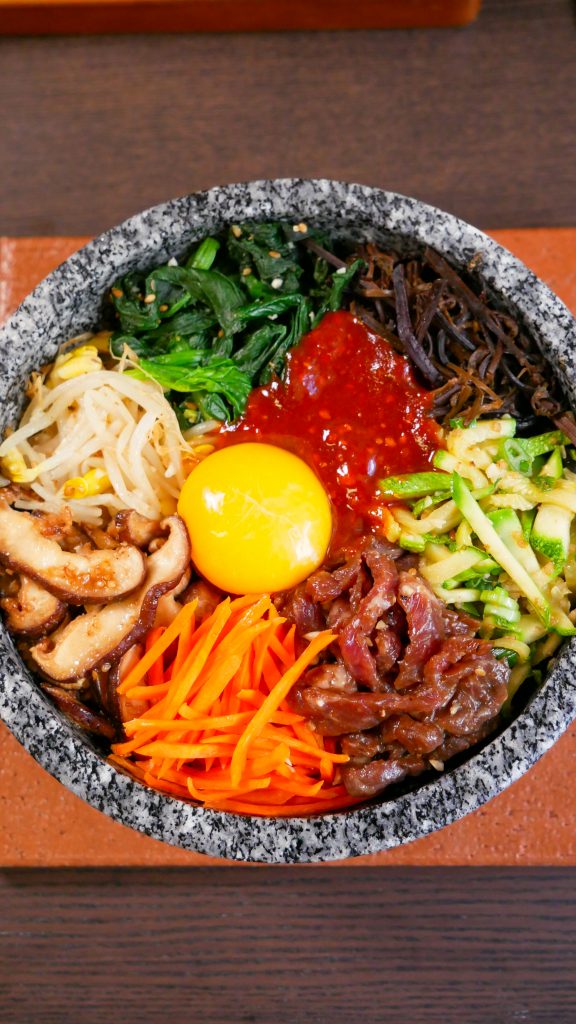
Why you’ll love this recipe
Bibimbap is a balanced, nourishing, healthy, and delicious meal all at once. It’s the type of meal that you won’t feel guilty after eating, and is less likely to make you feel sluggish! It’ll satisfy you and make you feel full for a longer time.
What I love most about this recipe is its adaptability. The vegetables I included for this are the usual components of the bibimbap. But sometimes, I like to switch it up and use up whatever vegetables I have on hand. That also makes it a great way to use up leftovers. You can customize your own bowls too. Pick your preferred vegetables and protein meat, and build it the way you like it.
Beef Dolsot Bibimbap Ingredients & Substitutions
Cooked rice: Starchy rice like short-grain or medium-grain rice works best for bibimbap. I like to use medium-grain most of the time because it’s not too moist nor too dry – it’s just right. Leftover rice from yesterday also works! It’s drier than freshly cooked rice, and therefore has a better-absorbing capacity for the sauce!
Sesame oil: To ensure the rice doesn’t stick and develops a beautiful crispy bottom, a light coating of sesame oil is applied to the dolsot. All I do is brush it on the bottom and sides of the stone bowl.
Egg yolk: In my opinion, bibimbap is not complete without an egg and I decided to use an egg yolk. When it’s mixed with the sauce, it helps to make it even richer and creamier! On the other hand, you may also opt for a fried egg cooked to your desired doneness instead of a raw egg yolk.
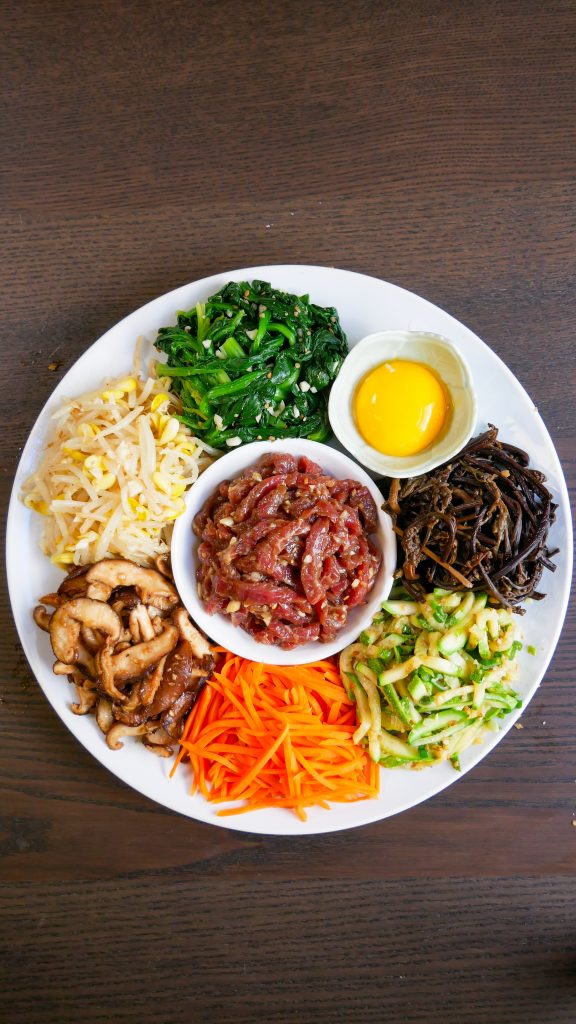
Marinated Beef Ingredients & Substitutions
Beef tenderloin: Ask your butcher for beef tartare grade beef if you want to make seasoned raw beef or yukhoe for this. It also be substituted with other types of lean beef but it’s important to verify that it is safe to consume raw. If you don’t have access to a butcher or fresh beef, you can use any cut of meat. Pan-fry and cook all the way through.
Minced garlic: Adds a rich aroma and flavor to the beef. You can substitute this with garlic powder, but for me, fresh is always best!
Sugar: For sweetness balance out the garlic and savory soy sauce.
Soy sauce: Packed with umami and also adds color. Sempio is my favorite soy sauce brand for this recipe.
Sesame oil: Adds nuttiness, boldness, and richness. I love using the Kadoya brand.
Sesame seeds: Also for nuttiness and added texture.
Ground black pepper: For added spice
Vegetable Ingredients & Substitutions
Spinach: a classic bibimbap ingredient and Korean side dish that’s rich in fiber. It’s blanched then seasoned with sesame oil, sugar, garlic, and salt. Can be substituted with Swiss chard or bok choy.
Bean sprouts: Prepared the same way as spinach! It can be substituted with snow peas or mung bean sprouts, which both have the same crunchy texture. Do not overcook them – you want them to be relatively crunchy still.
Carrots: Sweet and crunchy! They’re salted and pan-fried for a few minutes. Can be substituted with bell peppers.
Zucchini: Has a mild taste, which makes it a great canvas for other flavorful ingredients like garlic. Can be substituted with eggplant.
Shiitake mushrooms: For added umami! You can substitute this with any mushroom that you prefer.
Gosari (Dried Fernbrake): It has an earthy flavor like mushrooms, is slightly nutty, and has a chewy meaty texture. Make sure to pre-soak and boil to remove any bitterness. This is optional.
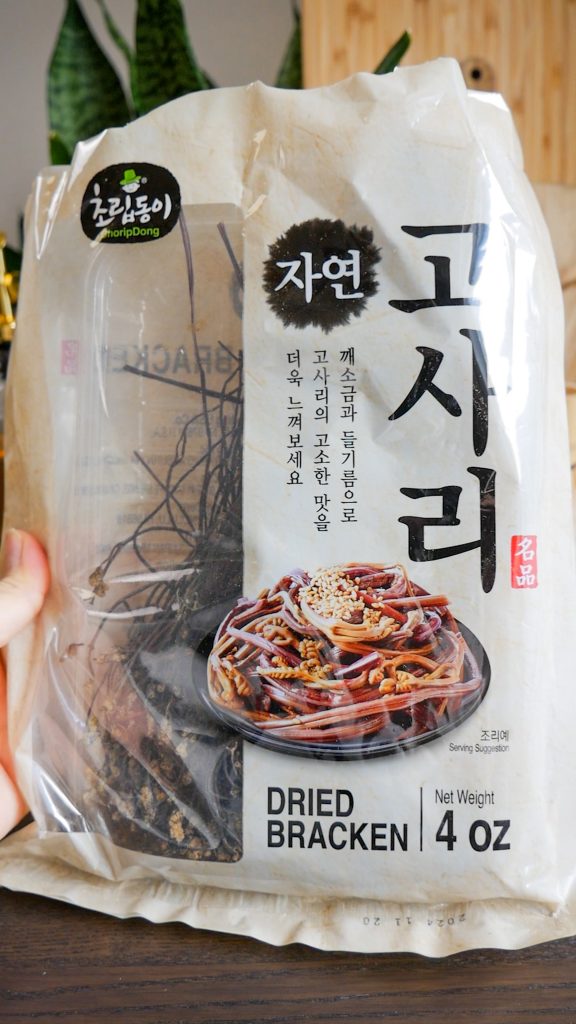
Scallion: Used as an aromatic to flavor the zucchini.
Minced garlic: a widely used aromatic in this recipe, starting from the beef to the vegetables. Use fresh garlic cloves for the best flavor.
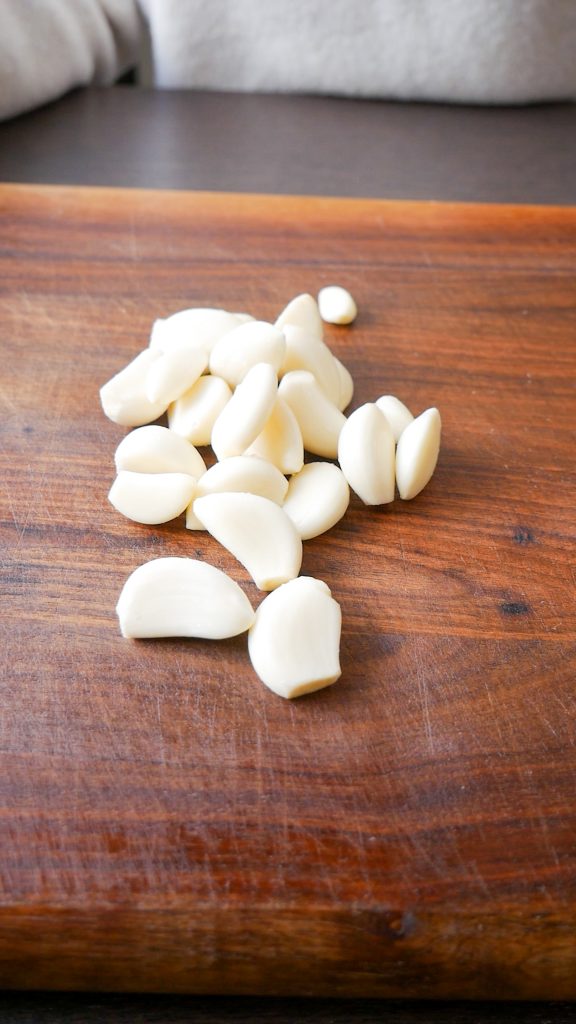
Sesame oil: For nuttiness
Sesame seeds: Also for nuttiness and added crunch
Sugar: A key ingredient in Korean cuisine, helps balance out the strong savory flavors
Salt: For seasoning
Ground black pepper: For seasoning
Gochujang Sauce Ingredients & Substitutions
Gochujang: This Korean red pepper paste is made from fermented soybeans, gochugaru (Korean red chili pepper flakes), glutinous rice, and salt. It is a staple ingredient in Korean dishes. There is no substitute that can exactly replicate it, so I recommend getting one in your nearest Asian grocery. Gochujang comes in a variety of spice levels starting from mild to hot to very hot. Bibimbap isn’t generally a very spicy dish so I recommend using the mild version.
Sugar: Adding sweetness for balance
White vinegar: Cuts through the richness of the gochujang and adds a touch of acidity
Sesame oil: For added nuttiness
Sesame seeds: For added texture
How to make Beef Dolsot Bibimbap
Step 1: Prepare the gosari
If using gosari (dried fern), soak in cold water for 8 hours or overnight. Transfer the soaked gosari into a pot with fresh water, making sure they’re completely submerged. Boil for 45 minutes or until they’ve softened. Drain then cut into 3-inch pieces. Set aside for later.
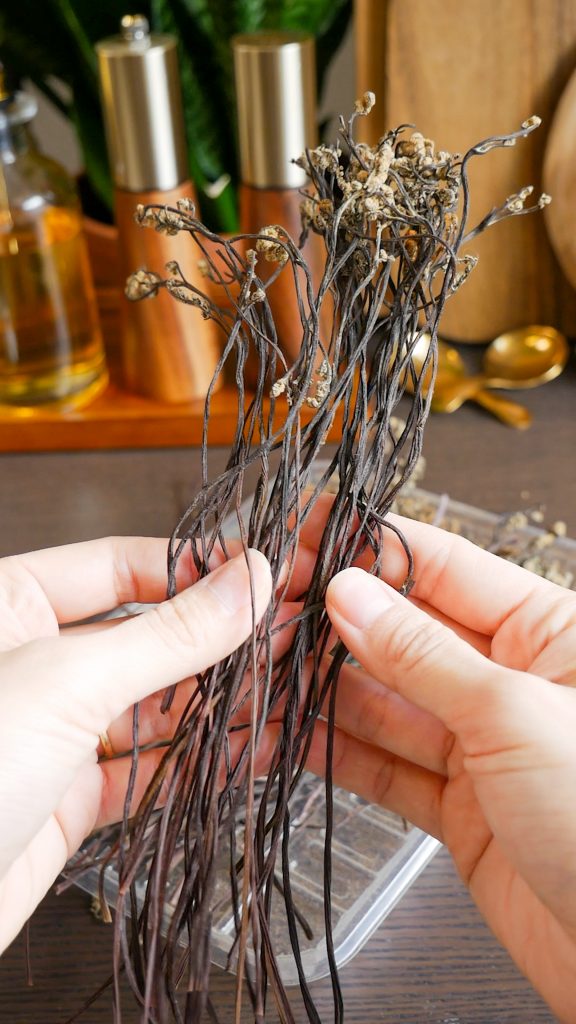


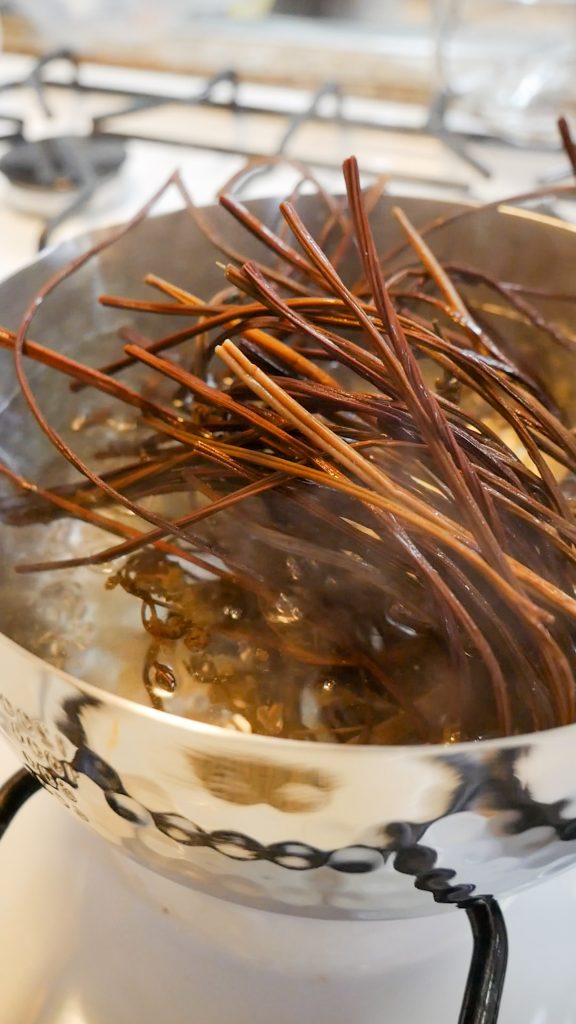
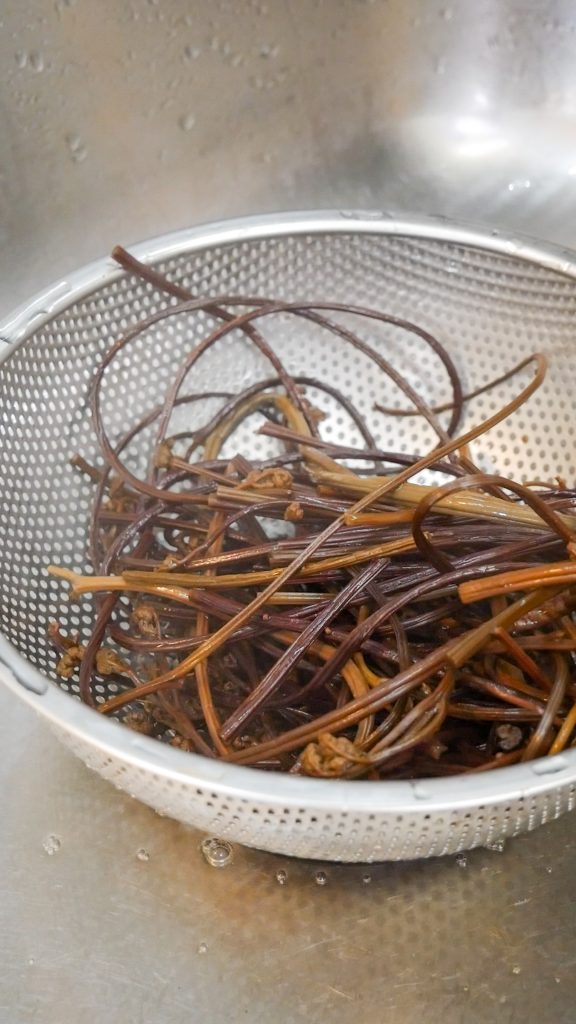
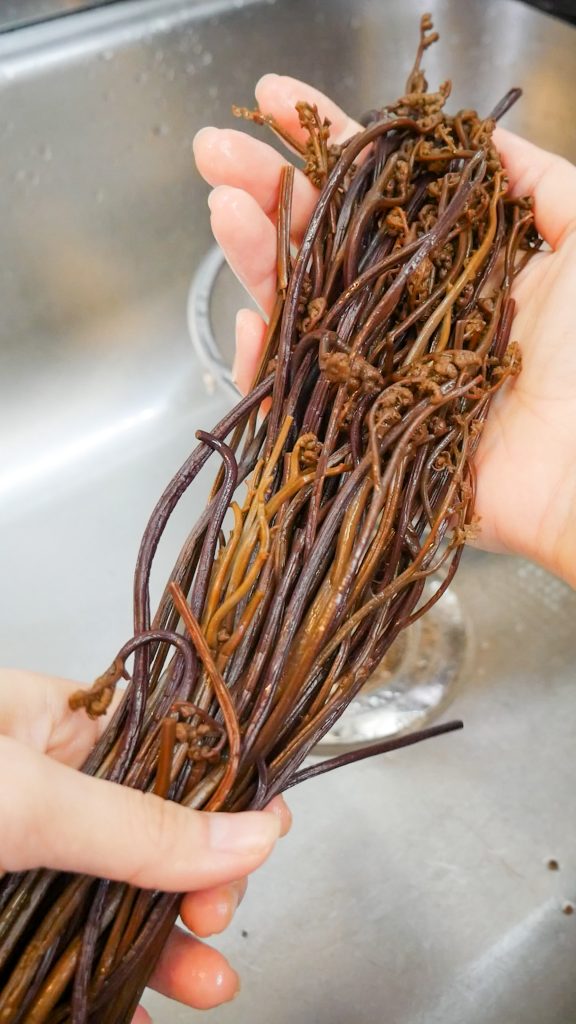
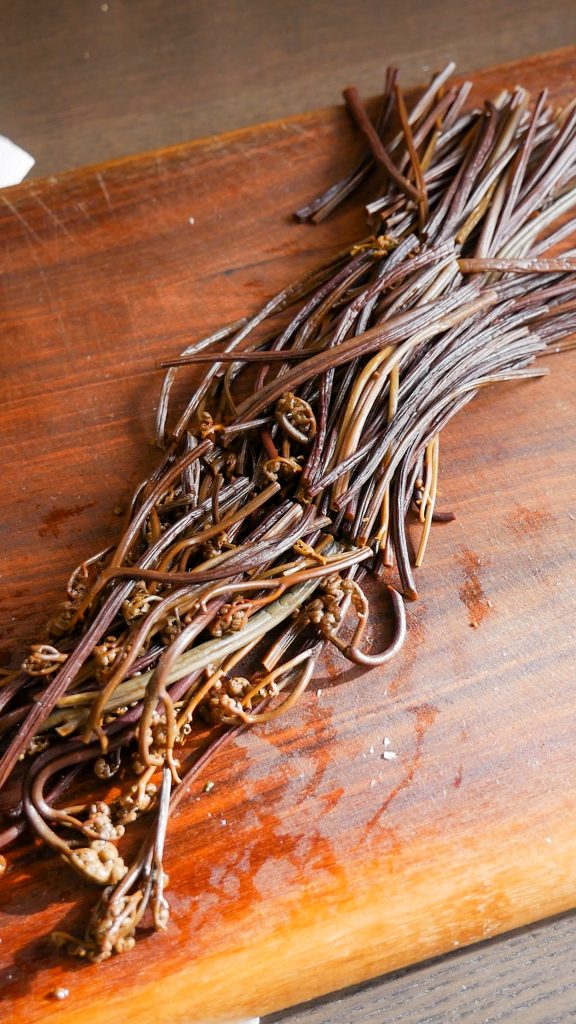
Step 2: Marinate the beef
Start by cutting the beef tenderloin into julienne strips. Season with minced garlic, sugar, soy sauce, sesame oil, sesame seeds, and ground black pepper. Mix well, making sure to rub the seasonings into the meat. Cover and transfer to the fridge to marinate for at least 30 minutes. Please note that the tenderloin needs to be very fresh to be consumed raw. Ask your butcher for beef tenderloin that is suitable for beef tartare. If you don’t have access to a butcher or fresh beef, use any cut of meat then pan-fry and cook all the way through.
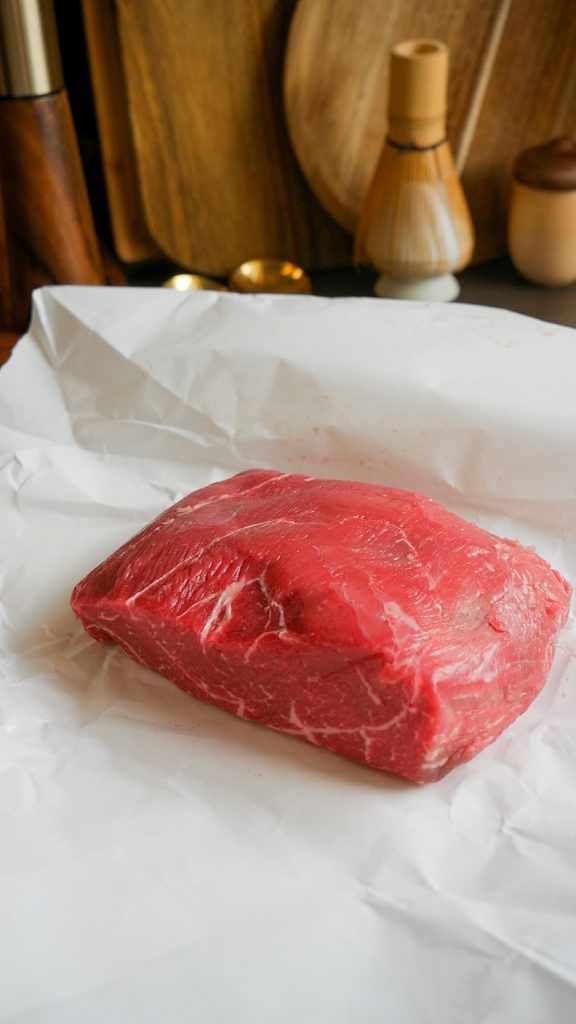
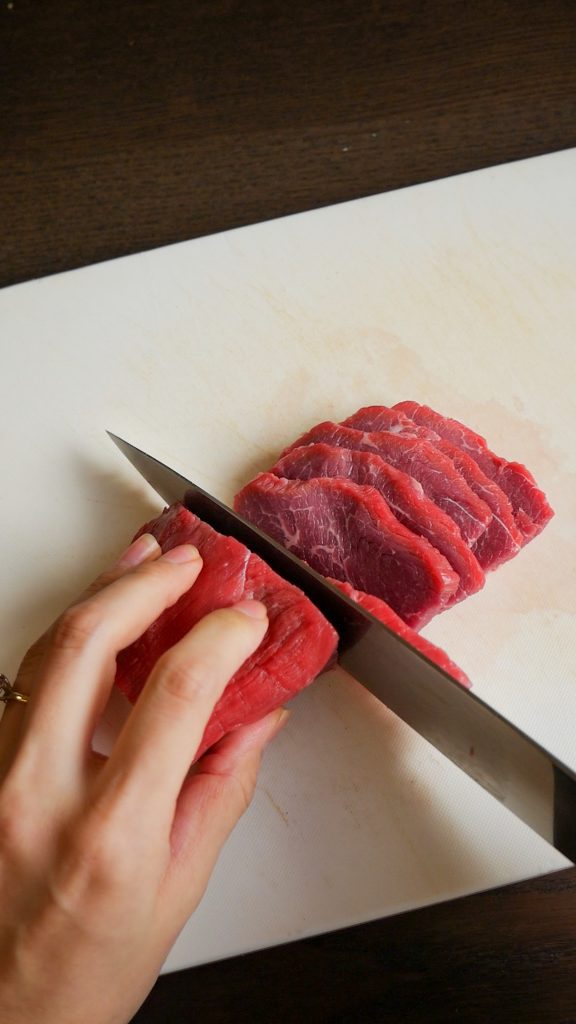
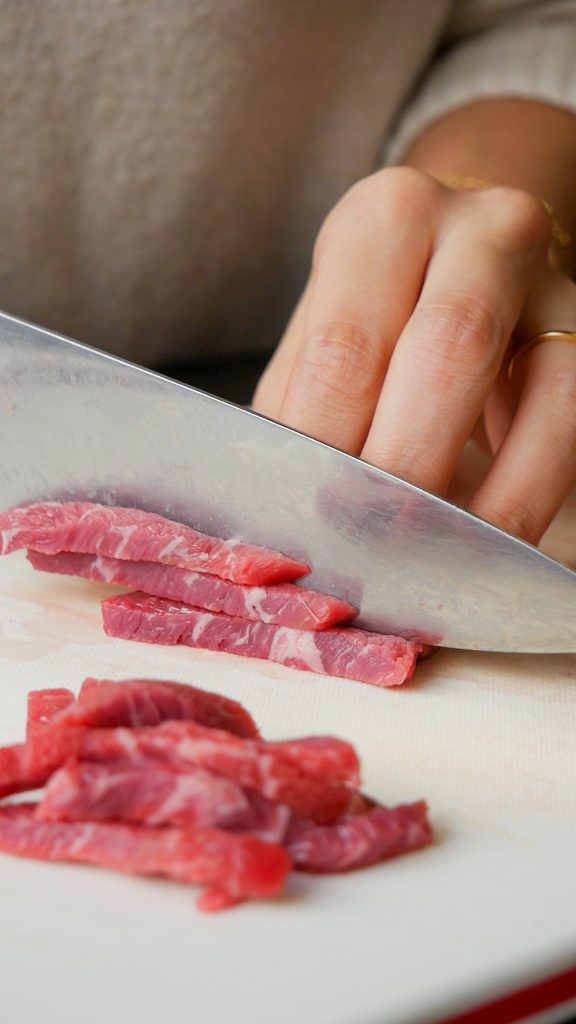
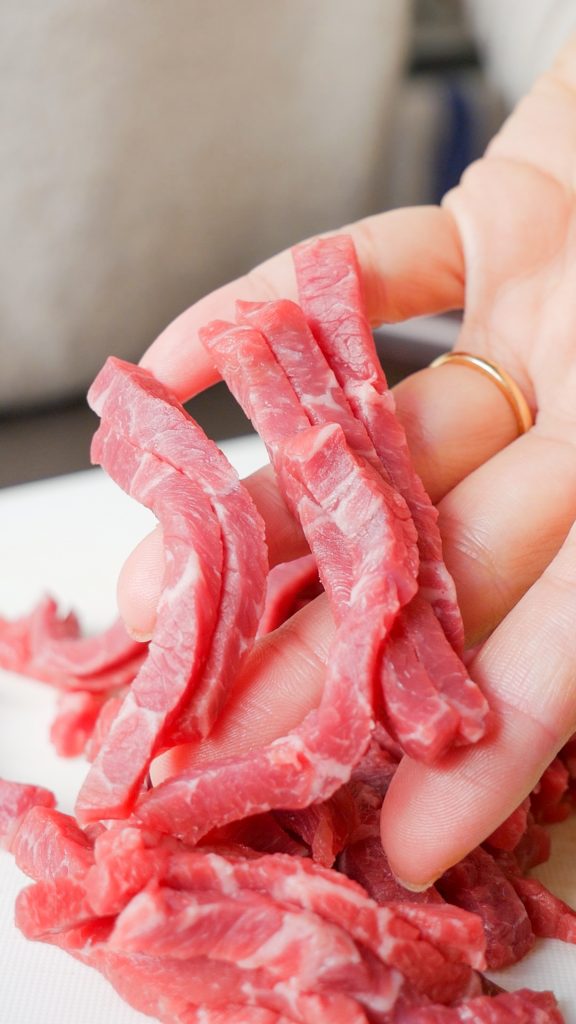
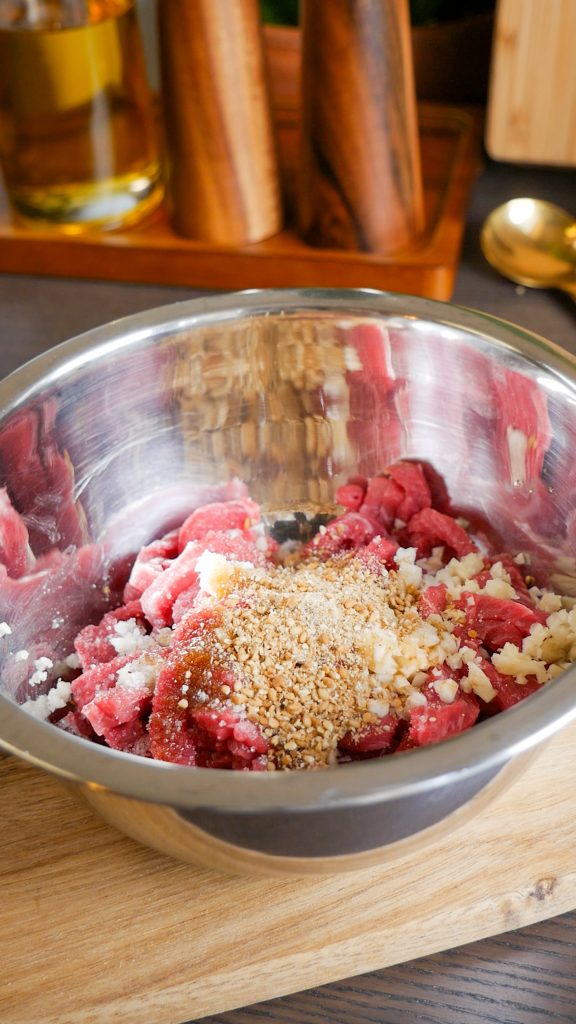
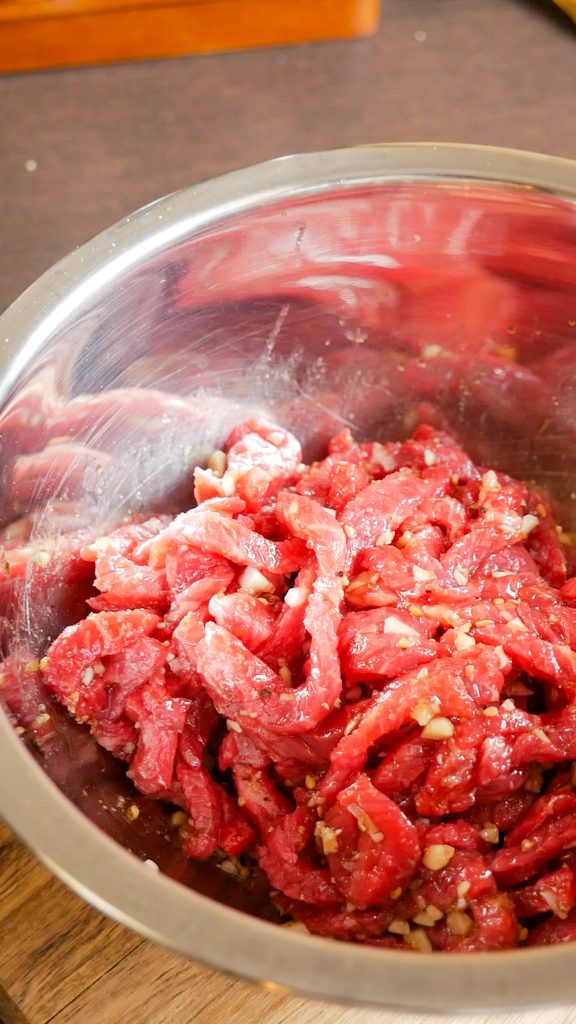
Step 3: Prepare the spinach
Blanch the spinach in lightly salted boiling water for 30 seconds. Immediately transfer to an ice bath or rinse under cold water. Squeeze the spinach to remove the excess water then transfer to a bowl. If using a longer variety of spinach, cut them into 3-inch pieces. Season with 1 teaspoon salt, 1 teaspoon minced garlic, 2 teaspoons sesame oil, and 1 teaspoon sesame seeds. Mix well then set aside
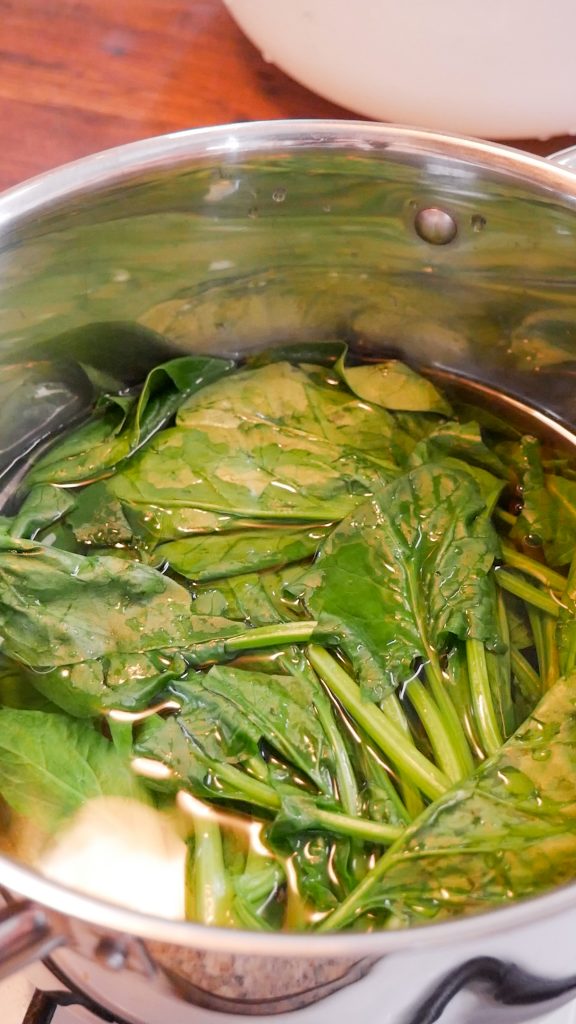
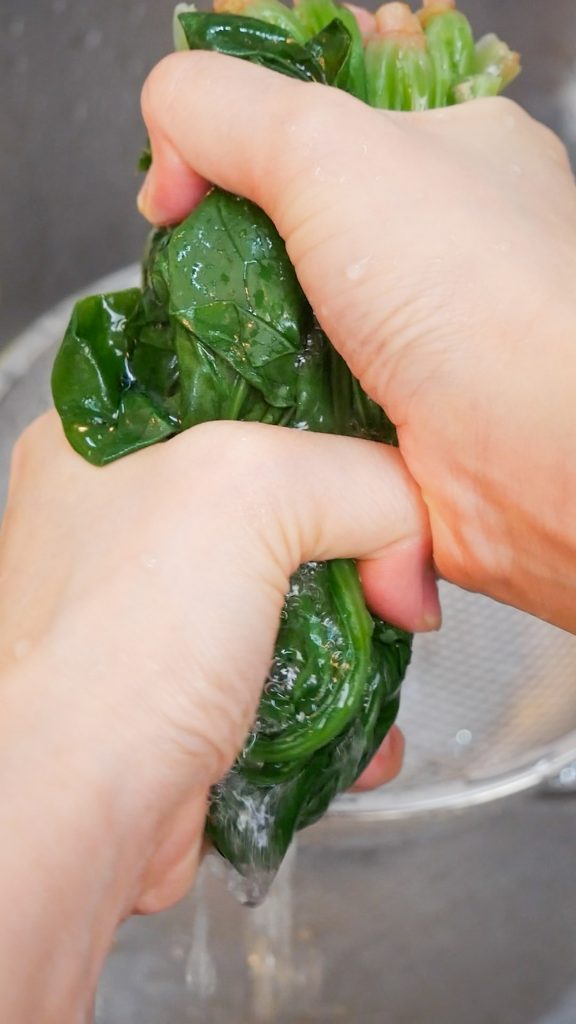

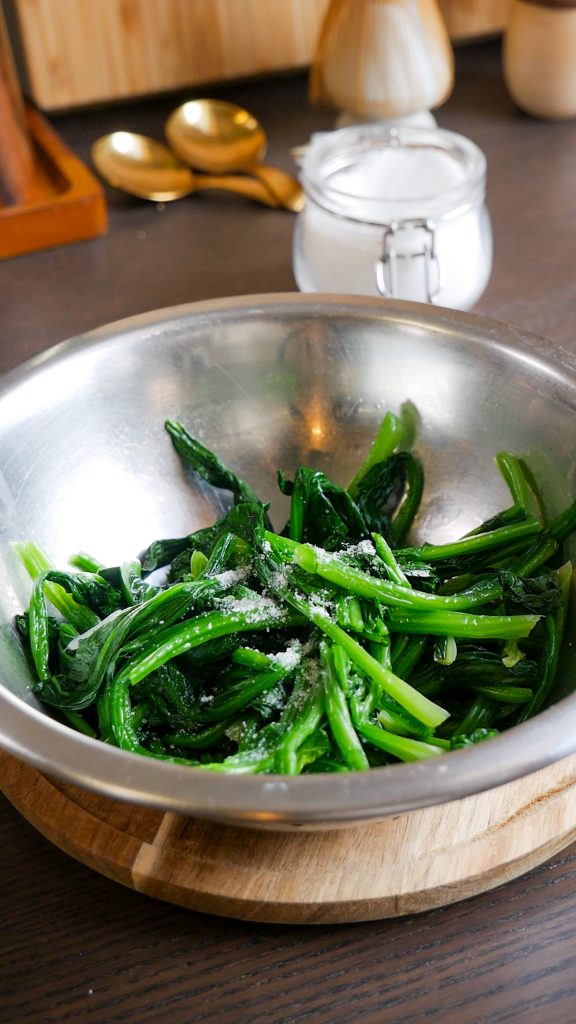
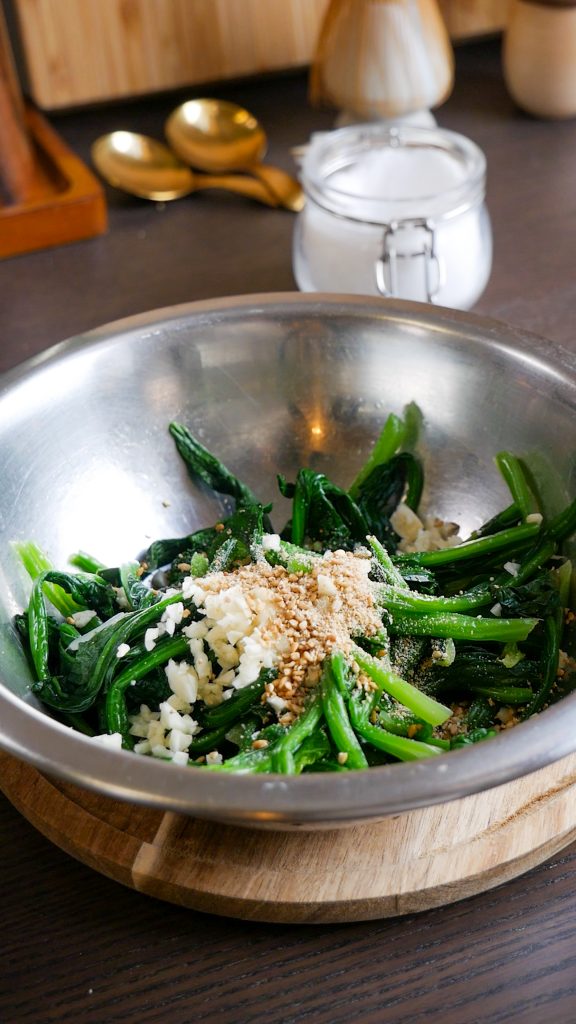

Step 4: Prepare the bean sprouts
Next, blanch the bean sprouts in lightly salted boiling water for 2 to 3 minutes then rinse under cold water. You can use the same salted boiling water as the spinach. Squeeze the excess water out then transfer to a mixing bowl. Season with 1 teaspoon salt, 1 teaspoon minced garlic, 2 teaspoons sesame oil, and 1 teaspoon sesame seeds. Mix well then set aside.
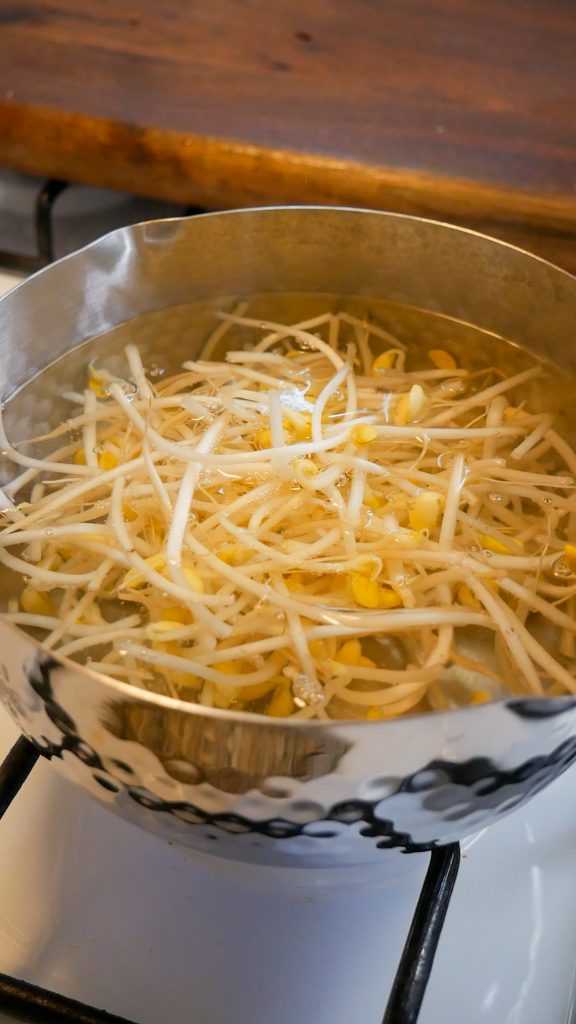
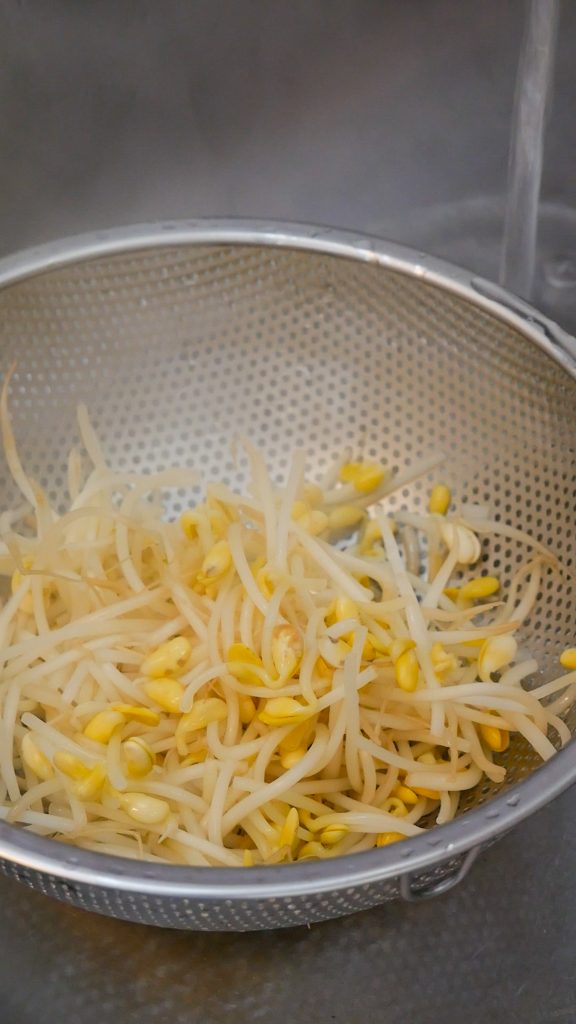
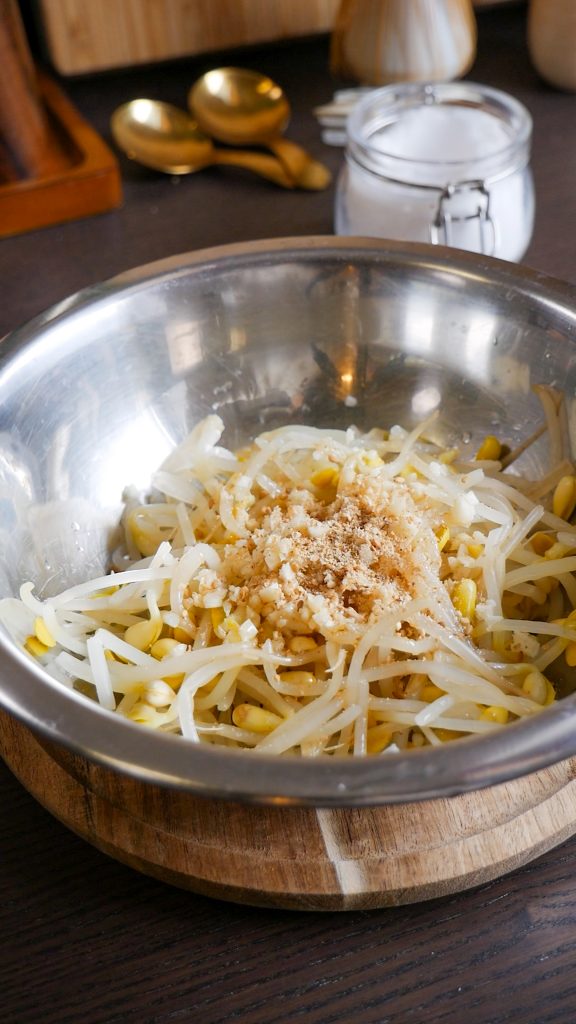

Step 5: Julienne the carrots and zucchini
Cut the carrot and zucchini into julienne strips then transfer into separate mixing bowls. Mix in 1/4 teaspoon of salt to each bowl and set aside for 15 minutes. This will sweat the vegetables, which means it will draw out moisture from inside the vegetables. After 15 minutes, drain any liquid pooled at the bottom of the bowl.

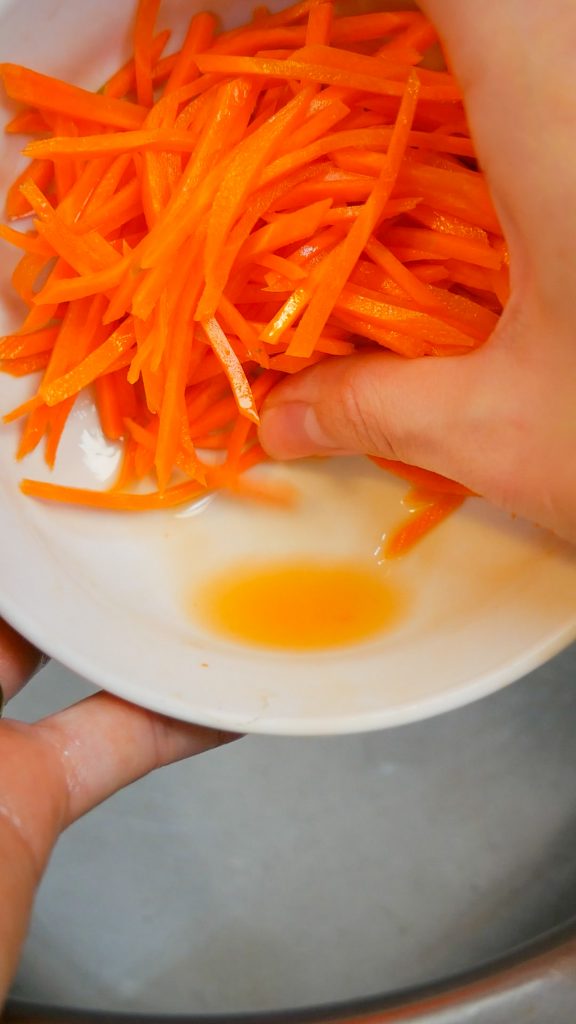
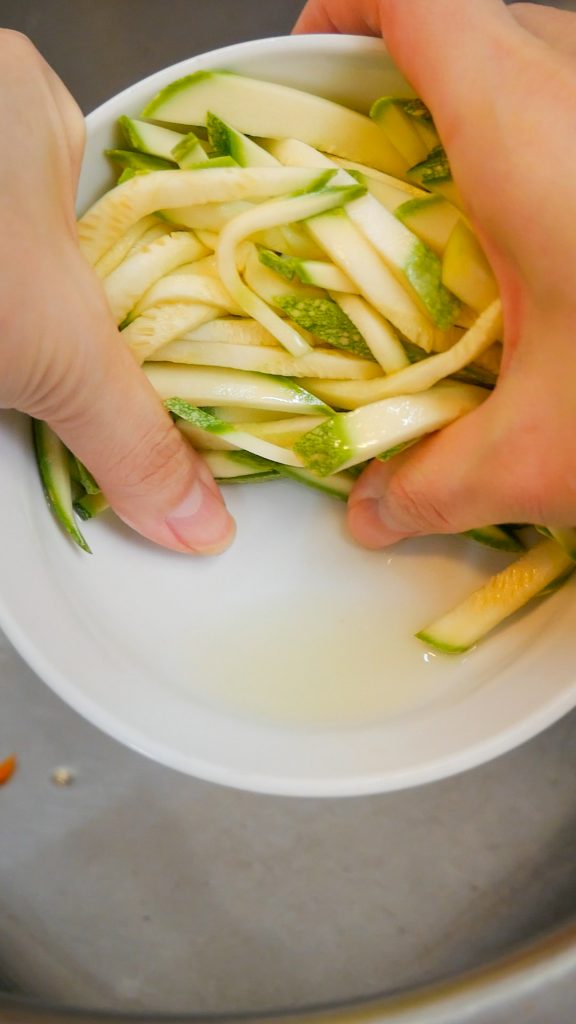
Step 6: Pan fry carrots
Heat a pan over medium heat. Toss in the carrots and pan fry for 1 to 2 minutes or until the carrots are tender. Remove and set aside.
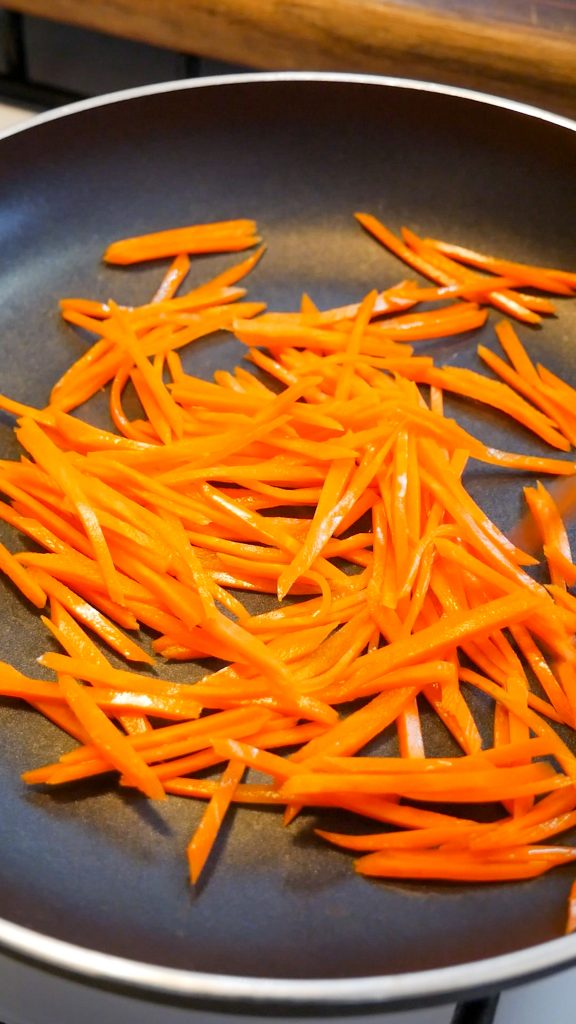
Step 7: Pan fry zucchini
In the same pan, add the zucchini with 1 teaspoon of minced garlic. Pan fry for 1 to 2 minutes then turn off the heat. Add 1 teaspoon sesame oil, 1 teaspoon sesame seeds, and chopped scallions. Mix well then remove and set aside.
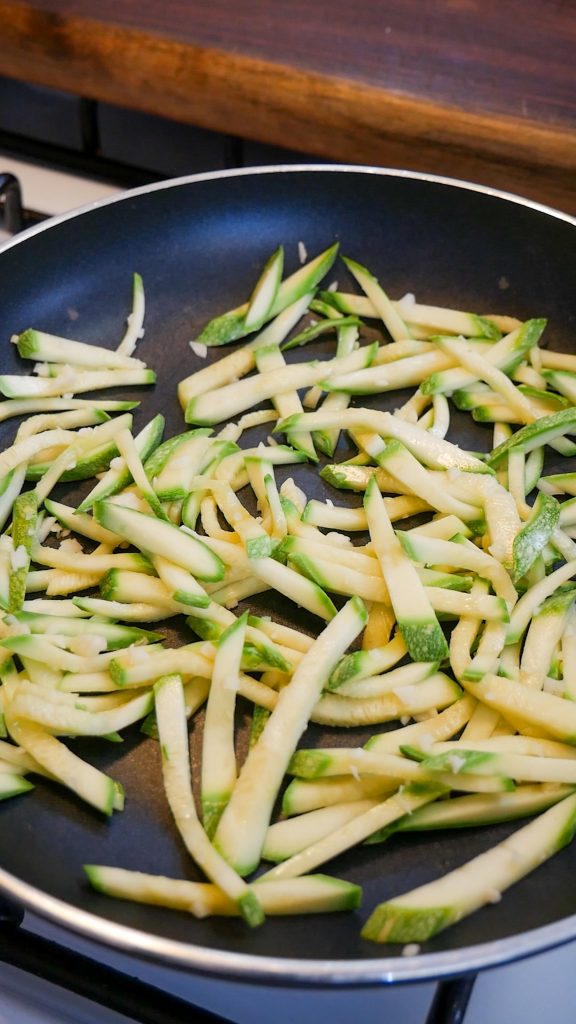
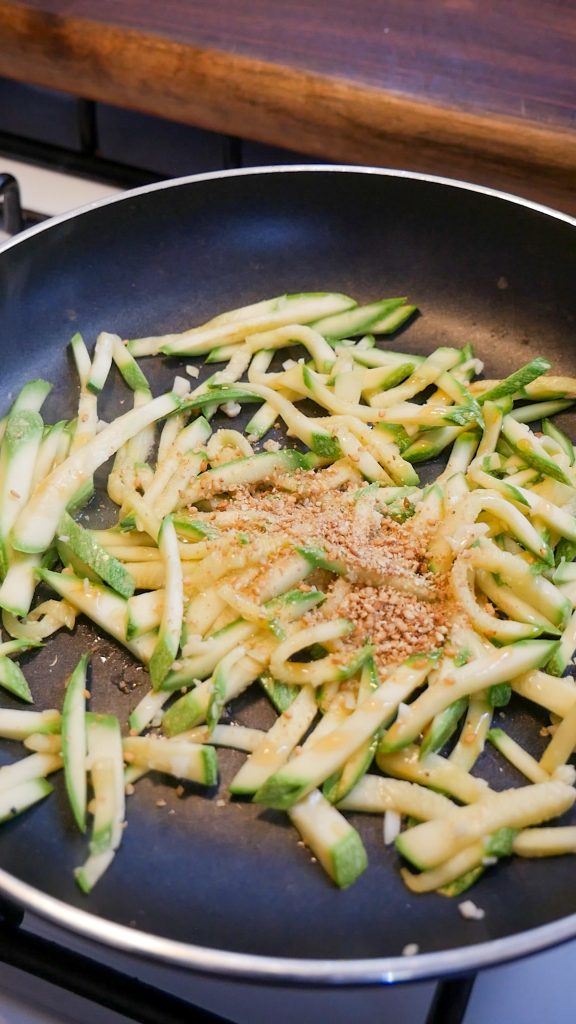
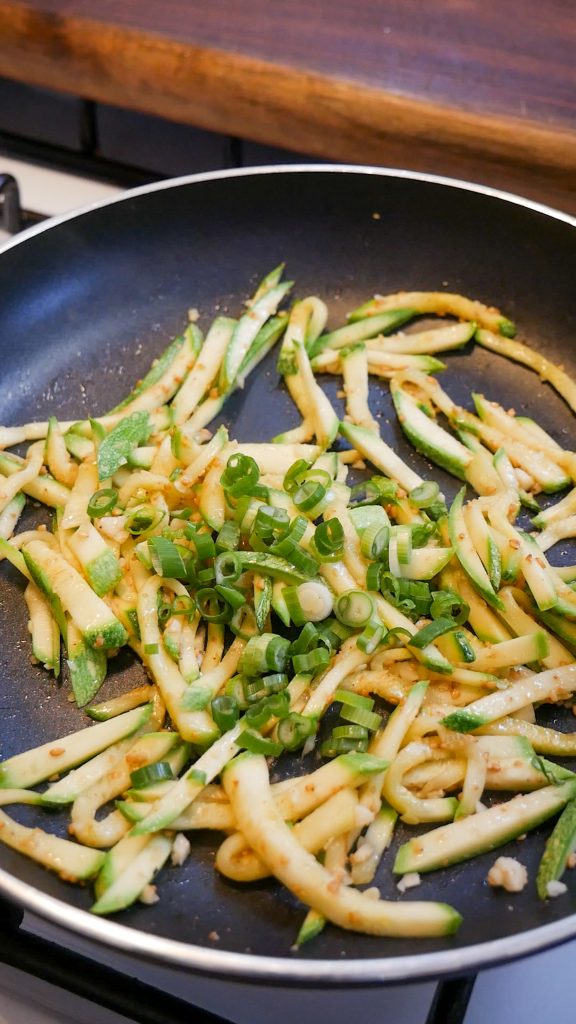
Step 8: Brown the mushrooms
Wipe the pan clean with a paper towel then toss in sliced shiitake mushrooms. Once the mushrooms start browning, season with 1 teaspoon soy sauce and mix well. Turn off the heat then add 1 teaspoon sesame oil and 1 teaspoon sesame seeds. Mix well then remove and set aside.
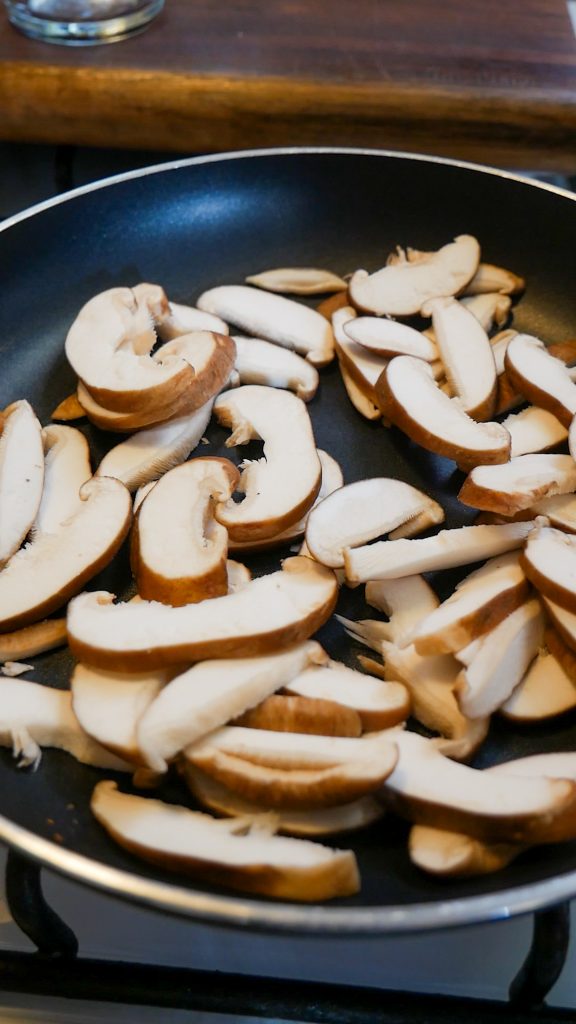
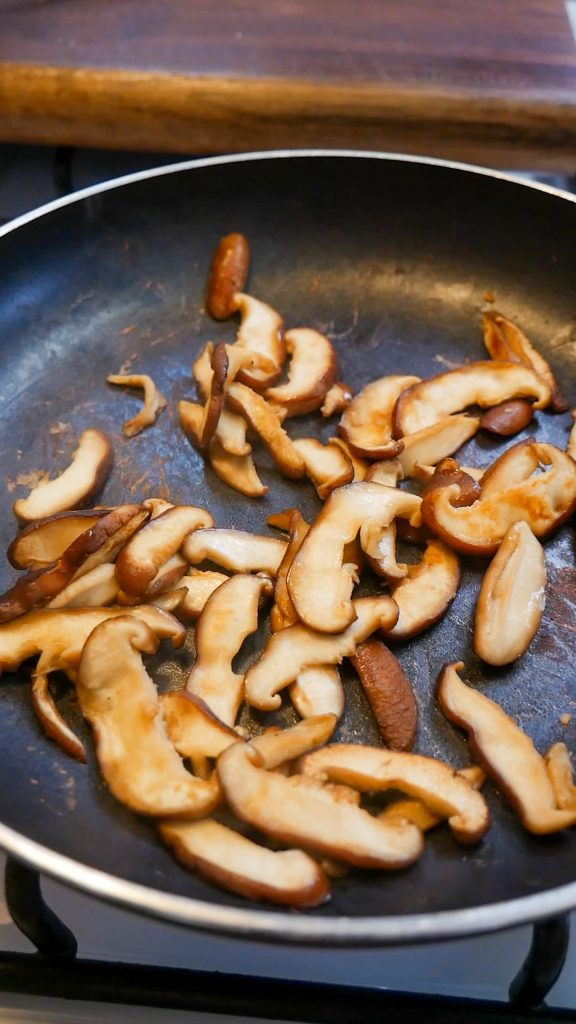
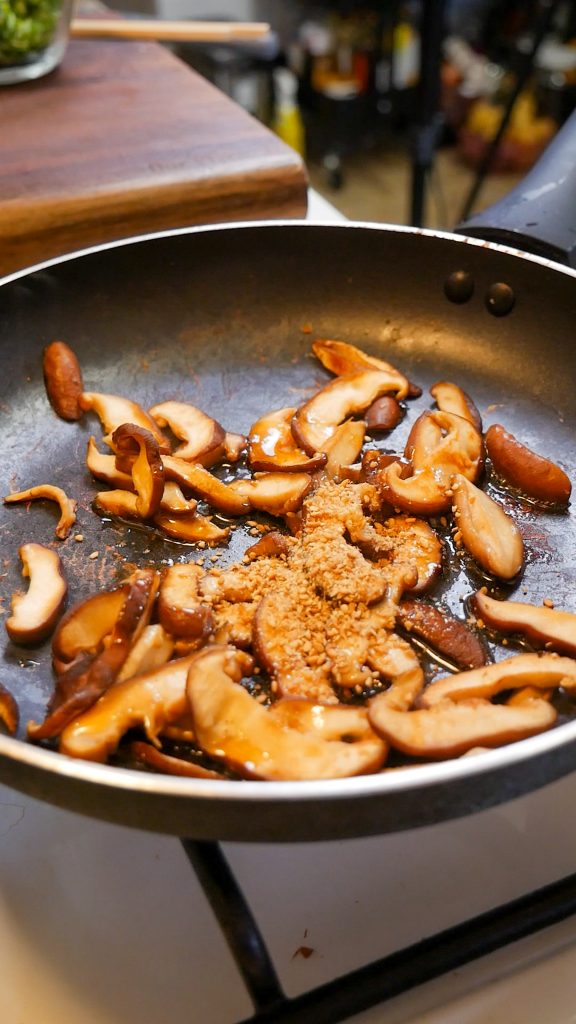
Step 9: Cook the gosari
Heat the same pan over medium heat. Add the gosari from earlier (if using). Season with 1 teaspoon minced garlic, 1/4 teaspoon sugar, and 1 teaspoon soy sauce. Mix well then remove and set aside.

Step 10: Heat up the dolsot
Heat the dolsot (stone bowl) over low heat for 10 minutes. It must be over low heat otherwise the dolsot can crack. Brush the inside of the stone bowl with 1 tablespoon sesame oil, making sure the bottom and sides are well coated.
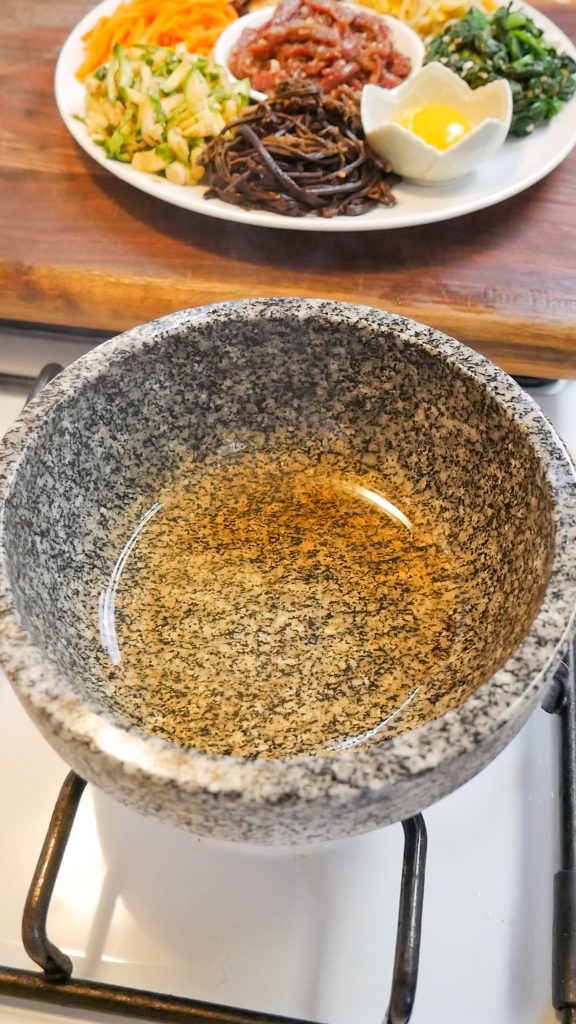
Step 11: Assemble
Add cooked rice and flatten it down with a spoon to create a flat surface. Allow the rice to crisp up in the stone bone for about 5 minutes. Then, arrange the vegetables, marinated beef, and egg yolk on top of the rice.


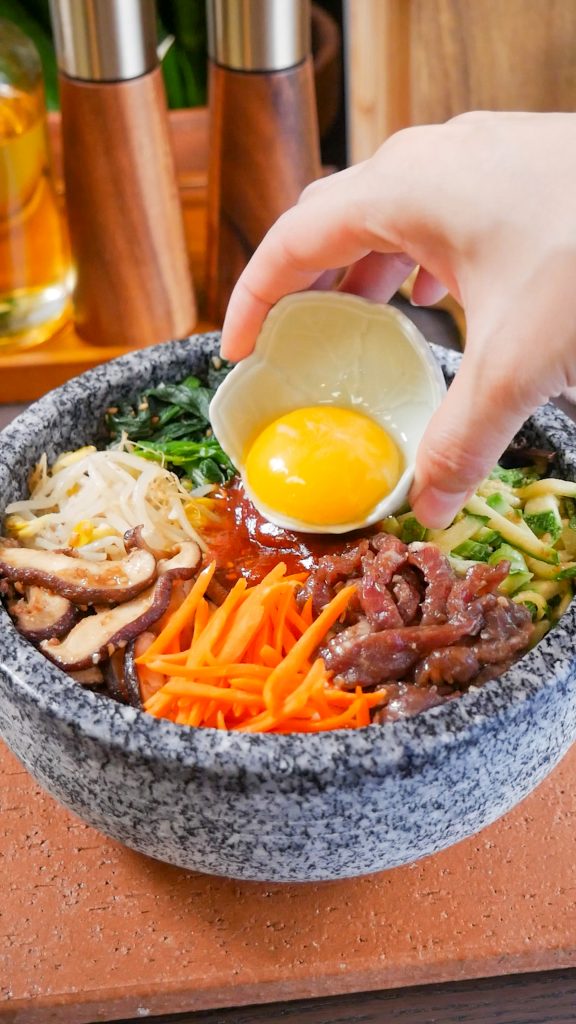
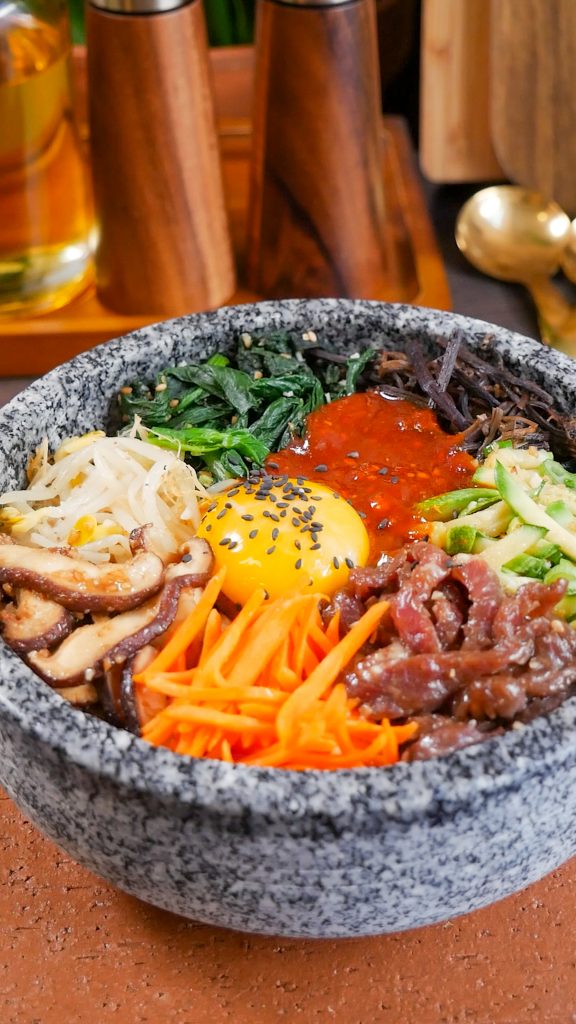
Step 12: Make the sauce
For the gochujang sauce, combine gochujang, sugar, white vinegar, sesame oil and sesame seeds. Mix until well combined.
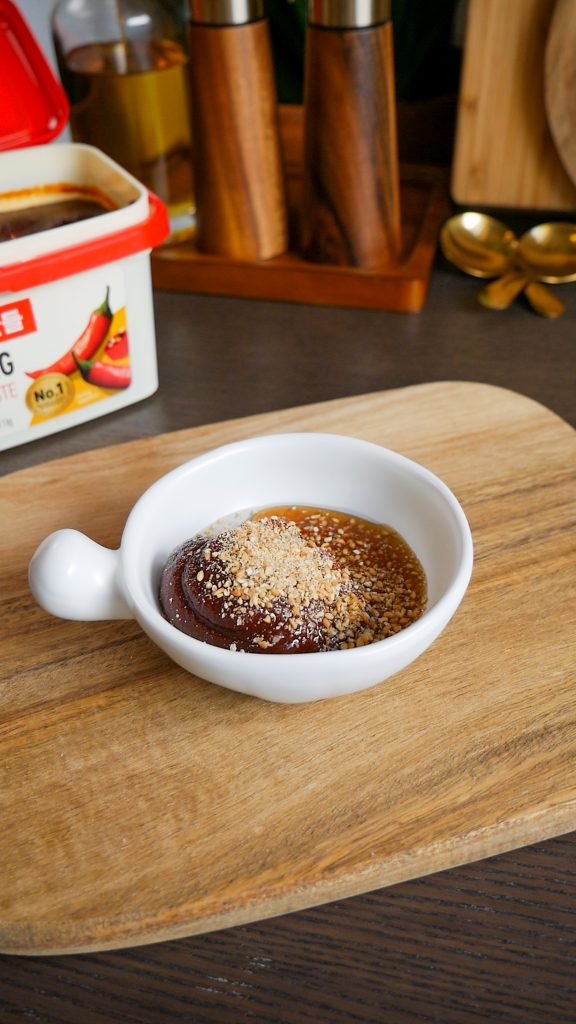
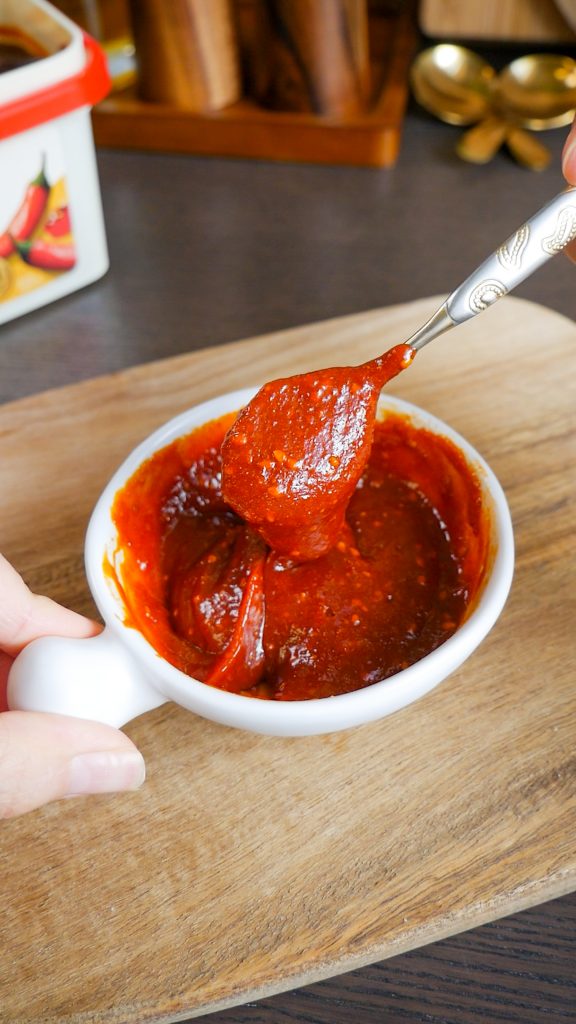
Step 13: Pour the sauce
Pour the sauce on top of the bibimbap. Mix and enjoy!
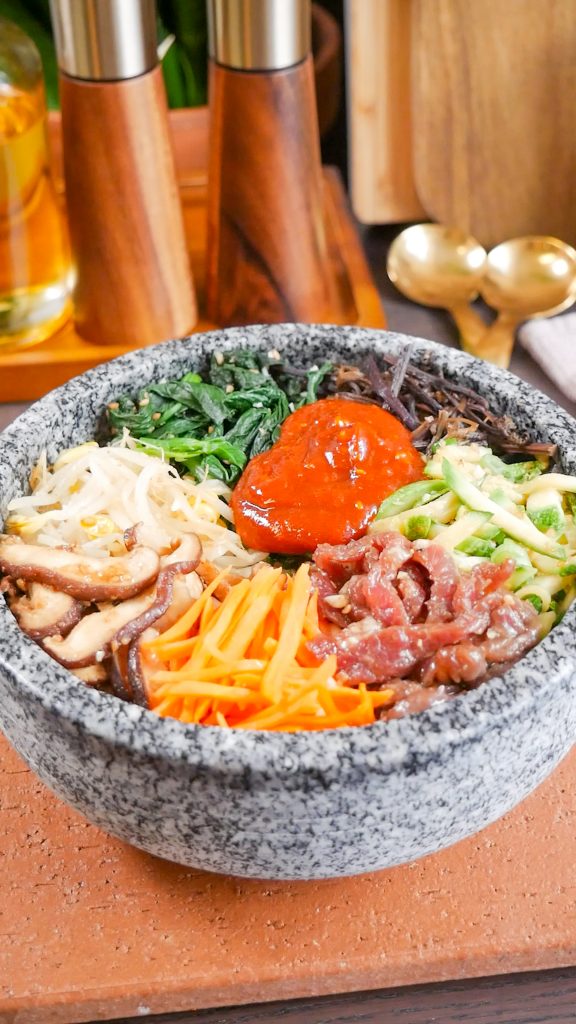
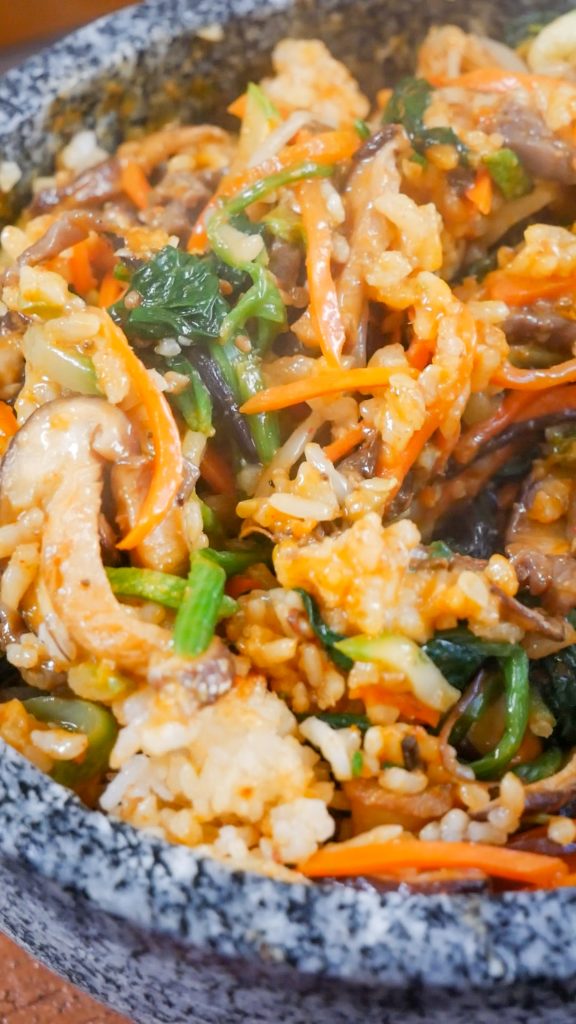
Preparation tips for Beef Dolsot Bibimbap
Here are the best tips for the most delicious bibimbap every time:
- Feel free to use any combination of vegetables and protein you desire. You can even use leftover banchan (side dishes) and customize your own bibimbap. This is what I usually do!
- Have everything ready before building your bibimbap. Make sure the rice and vegetables are cooked, the beef is marinated, the hot stone bowl is being heated up, and the sauce is already mixed. This will make assembling easier.
- You can prepare the beef raw like I did, but please note that the tenderloin needs to be very fresh to consume raw. Ask your butcher for beef tenderloin or a lean cut of beef that is suitable for beef tartare. If you don’t have access to a butcher or fresh beef, you need to pan-fry and cook all the way through.
- There are two ways to heat up the dolsot: on the stove like I did, or in the oven. If heating over the stove top, it must be over low heat otherwise the dolsot can crack. To heat it in the oven, place the empty stone bowls in the cold oven. Do not preheat. Then, set the temperature to 350F (175C) and let the dolsot heat up for 30 minutes. Meanwhile, you can prepare the vegetables as this is happening. Use mitts and be careful when taking out the dolsot from the oven.
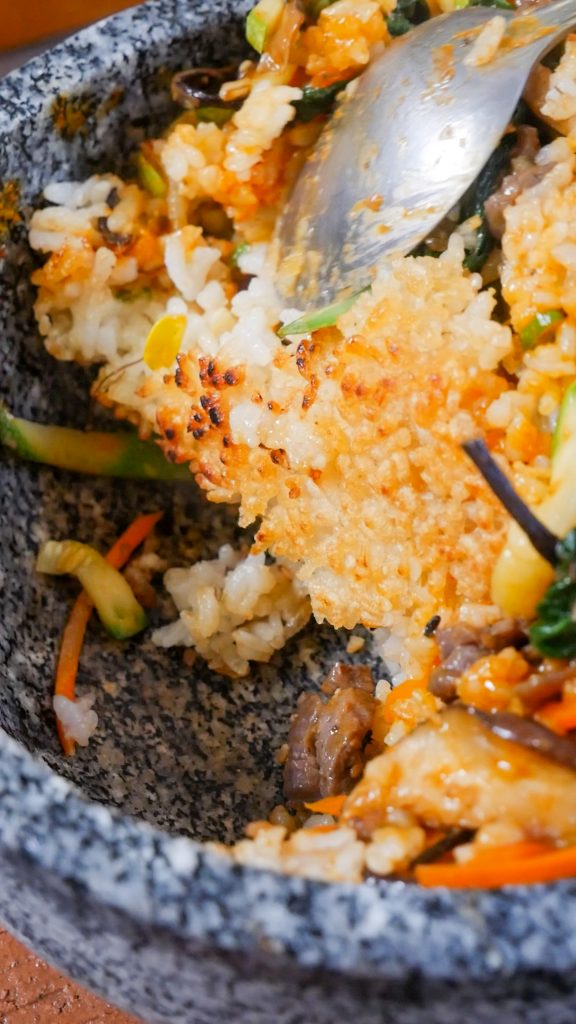
Frequently Asked Questions
What is the difference between bibimbap and dolsot?
Bibimbap is a popular Korean dish. Bibim means mixed and bap means rice, which is what bibimbap actually is—mixed rice. Bibimbap can be served in a regular bowl or in a dolsot! Dolsot translates to hot stone pot in English. It’s a traditional Korean cook and serveware that’s great for heat retention. For bibimbap, it helps sear the rice at the bottom, making it crispy and even more flavorful!
What does beef bibimbap taste like?
Exploding with sweet, savory, and spicy tastes! But they are all balanced with various textures and flavors. The rice is soft and crispy at the bottom, the vegetables are also soft with a slightly crunchy bite, the meat is tender, and the egg makes the gochujang sauce creamy and binds it all together.
Is beef raw in bibimbap?
They used to serve raw beef in bibimbap in some parts of Korea, like Jeonju. The beef is served pretty much like steak tartare. However, unless you have access to fresh beef that is safe for raw consumption, it’s recommended to cook the beef before adding it to bibimbap.
Looking for more easy and delicious Korean-inspired recipes?
Chicken Kimbap — An East meets West fusion of a Korean classic favorite. It’s filled with chicken fries, Korean yellow pickled radish (or ‘danmuji‘ in Korean), and chives for a balanced yet delicious bite!
Crab Onigiri — Seasoned rice is filled with a delicious crab filling made with imitation crab sticks, Japanese mayonnaise, sambal, lemon zest, and scallions. Small in size and packed with big flavors, they’re the perfect on-the-go snack or lunch for hectic days.
Yubuchobap — Yubuchobap or Korean inari sushi is sweet and savory tofu pockets that are stuffed with seasoned rice and occasionally served with toppings. It translates as tofu (yubu) and sticky rice (chobap) and is similar to inari sushi in Japanese cuisine.
Mushroom Rice Bowl — It’s made from simple and vegetarian-friendly ingredients and only takes 30 minutes to prepare. It’s ideal for when you’re not in the mood to spend hours in the kitchen but still want a deliciously filling meal.
Mentaiko Onigiri — Rice is filled with ‘myeongnan-joet‘ or spicy cured pollock roe. This fish roe has a deep, rich, umami flavor, and while it’s not ‘fishy,’ it does have a strong seafood essence.
Marinated Salmon Sashimi — Korean marinated salmon sashimi or ‘yeoneojang‘ is a refreshing and delicious dish made with raw salmon that has been cured in a rich and savory soy marinade. A ‘rice thief’ or ‘bap doduk’ [밥도둑]! It’ll make you want to eat more rice than you normally do.
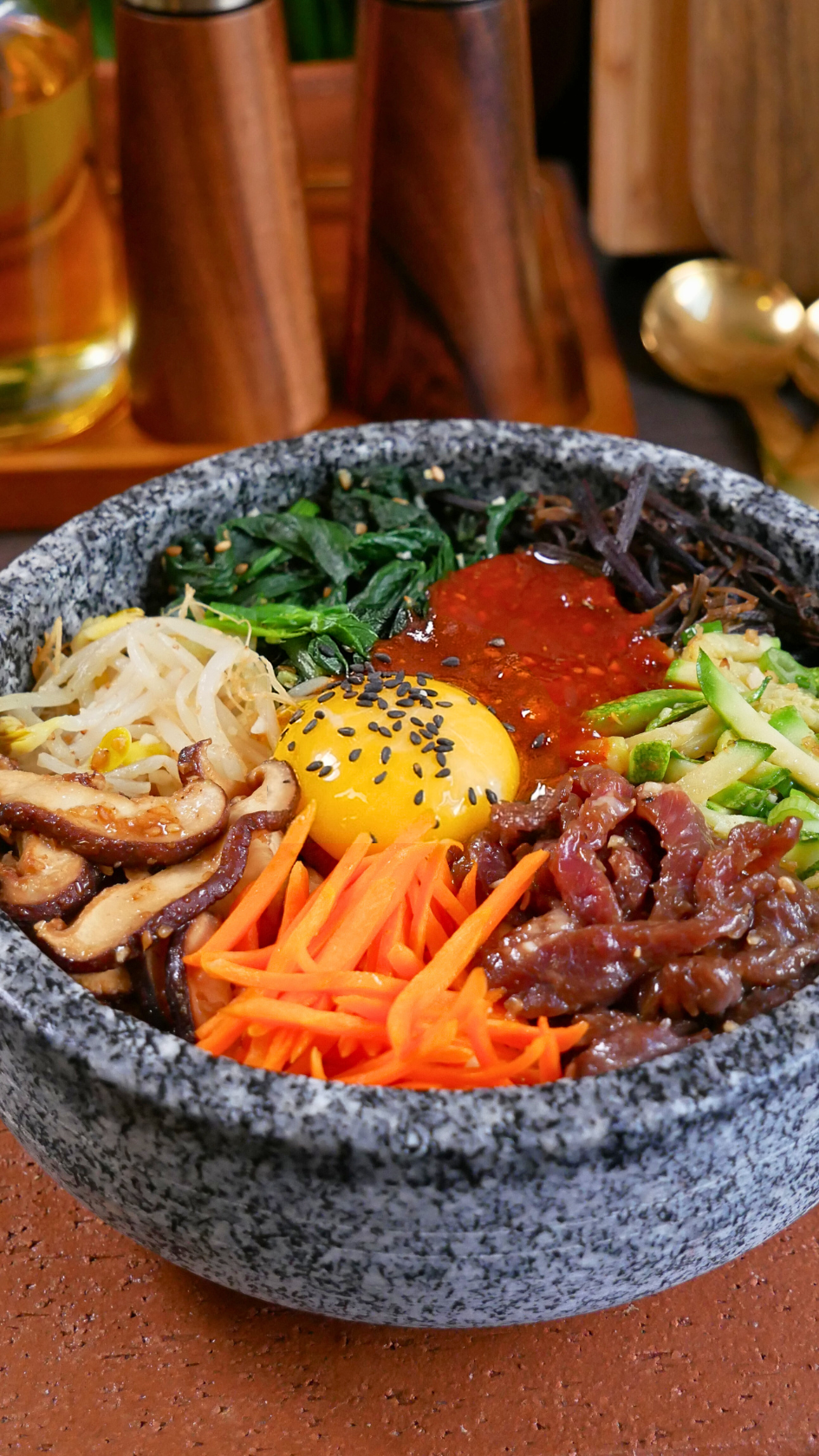
Beef Dolsot Bibimbap Recipe – 소고기 돌솥 비빔밥 (Stone Bowl Bibimbap)
Ingredients
- 2 1/2 cups cooked rice short-grain or medium-grain
- 1 tbsp sesame oil for stone bowl
- 1 egg yolk
Marinated Beef
- 4 ounces fresh beef tenderloin ask your butcher for beef tartare grade beef, can also use other types of lean beef
- 1/2 tbsp minced garlic
- 1/2 tbsp sugar
- 1 tbsp soy sauce adjust to taste
- 1 tbsp sesame oil
- 1 tsp sesame seeds
- 1/8 tsp ground black pepper
Vegetables
- 4 ounces spinach
- 4 ounces bean sprouts
- 4 ounces carrots about 1/2 carrot
- 4 ounces zucchini about 1/2 medium zucchini
- 1/2 cup sliced shiitake mushrooms
- 1/2 ounce gosari dried fernbrake (optional)
- 1/2 chopped scallion green part only
- 4 tsp minced garlic divided
- 6 tsp sesame oil divided
- 4 tsp sesame seeds divided
- 1/4 tsp sugar
- 1 tsp salt divided + more if needed
- freshly ground black pepper
Gochujang Sauce
- 2 tbsp gochujang
- 1 tsp sugar
- 4 tsp white vinegar adjust to taste
- 1 tbsp sesame oil
- 1 tsp sesame seeds
Instructions
- If using gosari (dried fern), soak in cold water for 8 hours or overnight. Transfer the soaked gosari into a pot with fresh water, making sure they're completely submerged. Boil for 45 minutes or until they've softened. Drain then cut into 3-inch pieces. Set aside for later.
- Start by cutting the beef tenderloin into julienne strips. Season with minced garlic, sugar, soy sauce, sesame oil, sesame seeds and ground black pepper. Mix well, making sure to rub the seasonings into the meat. Cover and transfer to the fridge to marinate for at least 30 minutes.*Please note that the tenderloin needs to be very fresh to consume raw. Ask your butcher for tenderloin that is suitable for beef tartare. If you don't have access to a butcher or fresh beef, pan fry and cook all the way through.*
- Blanch the spinach in lightly salted boiling water for 30 seconds. Immediately transfer to an ice bath or rinse under cold water. Squeeze the spinach to remove the excess water then transfer to a bowl. If using a longer variety of spinach, cut them into 3-inch pieces. Season with 1 teaspoon salt, 1 teaspoon minced garlic, 2 teaspoons sesame oil, and 1 teaspoon sesame seeds. Mix well then set aside.
- Next, blanch the bean sprouts in lightly salted boiling water for 2 to 3 minutes then rinse under cold water. Squeeze the excess water out then transfer to a mixing bowl. Season with 1 teaspoon salt, 1 teaspoon minced garlic, 2 teaspoons sesame oil, and 1 teaspoon sesame seeds. Mix well then set aside.
- Cut the carrot and zucchini into julienne strips then transfer into separate mixing bowls. Mix in 1/4 teaspoon of salt to each bowl and set aside for 15 minutes. This will sweat the vegetables, which means draw out moisture from inside the vegetables. After 15 minutes, drain any liquid pooled at the bottom of the bowl.
- Heat a pan over medium heat. Toss in the carrots and pan fry for 1 to 2 minutes or until the carrots are tender. Remove and set aside.
- In the same pan, add the zucchini with 1 teaspoon of minced garlic. Pan fry for 1 to 2 minutes then turn off the heat. Add 1 teaspoon sesame oil, 1 teaspoon sesame seeds, and chopped scallions. Mix well then remove and set aside.
- Wipe the pan clean with a paper towel then toss in sliced shiitake mushrooms. Once the mushrooms start browning, season with 1 teaspoon soy sauce and mix well. Turn off the heat then add 1 teaspoon sesame oil and 1 teaspoon sesame seeds. Mix well then remove and set aside.
- Heat the same pan over medium heat. Add the gosari from earlier (if using). Season with 1 teaspoon minced garlic, 1/4 teaspoon sugar, and 1 teaspoon soy sauce. Mix well then remove and set aside.
- Heat the dolsot (stone bowl) over low heat for 10 minutes. Brush the inside of the stone bowl with 1 tablespoon sesame oil, making sure the bottom and sides are well coated.
- Add cooked rice and flatten it down with a spoon to create a flat surface. Allow the rice to crisp up in the stone bone for about 5 minutes. Then, arrange the vegetables, marinated beef and egg yolk on top of the rice.
- For the gochujang sauce, combine gochujang, sugar, white vinegar, sesame oil and sesame seeds. Mix until well combined.
- Pour the sauce on top of the bibimbap. Mix and enjoy!